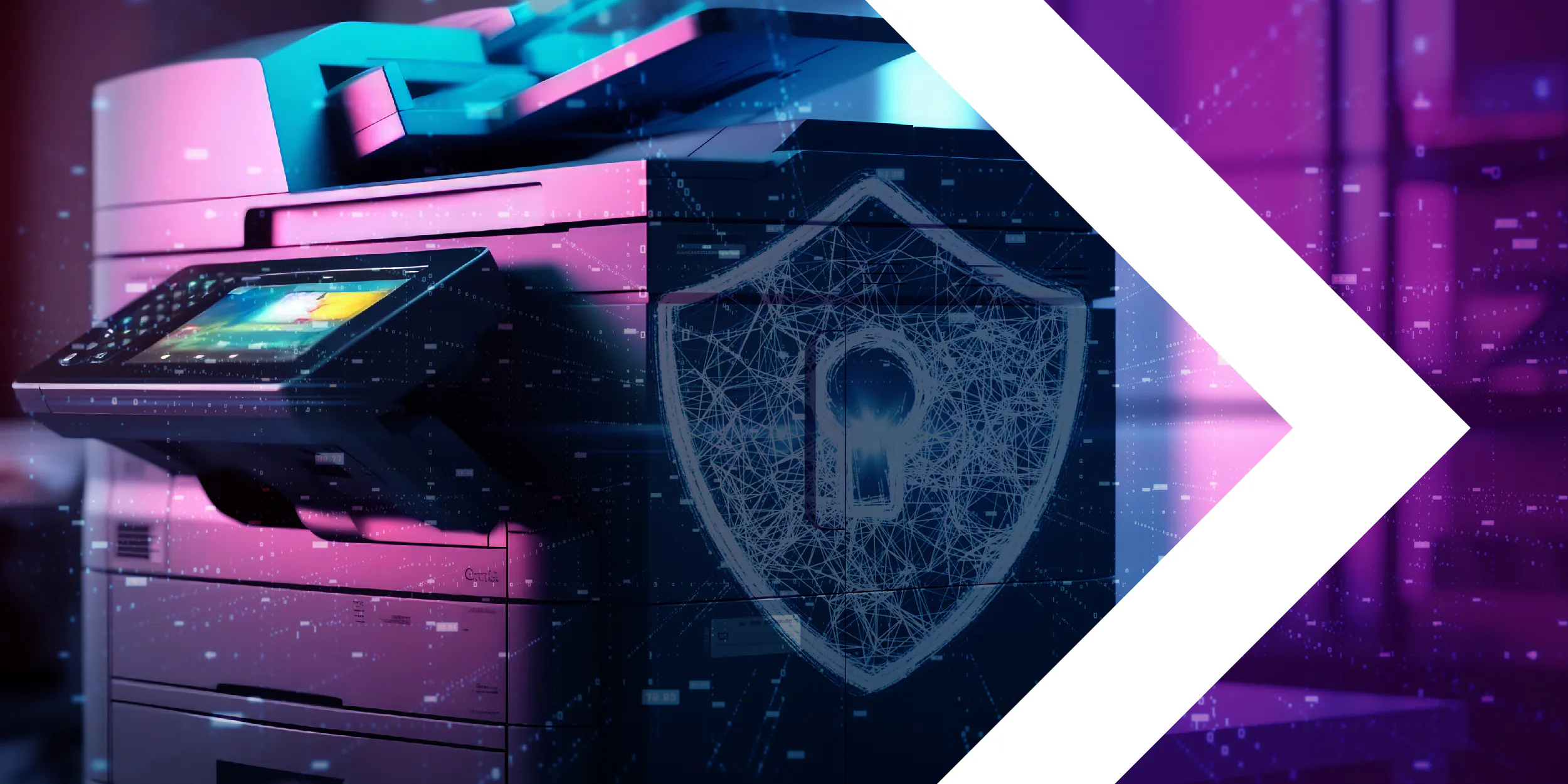When you think “cybersecurity,” what comes to mind?
Firewalls. Endpoints. Phishing simulations. Cloud backups.
Now—what about your printers?
For most organizations, print environments are the forgotten frontier of cybersecurity. Yet these devices are fully networked, store sensitive data, and can be exploited just like a laptop or server. In fact, multifunction printers (MFPs) have been increasingly targeted in cyberattacks because they often operate in a security blind spot.
If you’re not securing your print infrastructure with the same rigor as the rest of your IT stack, you’re already at risk.
Printers Are Endpoints—Treat Them Like It
Let’s start with a mindset shift: printers are not peripheral—they are endpoints.
Here’s why:
- They store sensitive documents in memory or hard drives (think payroll, client contracts, patient records).
- They transmit data over internal networks and the internet.
- They run firmware—which, if unpatched, can be exploited via zero-day vulnerabilities.
- They have user interfaces that can be manipulated.
- And in most environments, they’re accessible to anyone with physical access to the office.
If your organization has invested in EDR, MFA, and network segmentation—but still uses default admin passwords on your printers—you’ve essentially left the side door open while locking the front.
Five Pillars of a Secure Print Strategy
Let’s break down the key components of a truly secure print environment. These aren’t just checkbox items—they’re ongoing, integrated practices aligned with modern cybersecurity frameworks like NIST CSF and Zero Trust.
1. Device Hardening
Change default passwords (and disable unnecessary accounts)
Apply firmware updates regularly—automate this if possible
Disable unused ports and protocols (e.g., FTP, Telnet, WSD)
Enable secure boot and firmware integrity checks
2. User Authentication and Access Control
Require badge release printing or PIN codes
Use Active Directory or SSO integration to limit access based on user roles
Prevent walk-up printing or scanning without verified identity
Implement least privilege principles across printer settings
3. Secure Print Job Handling
Use pull printing to release documents only when users authenticate at the device
Encrypt print jobs in transit using TLS or IPPS
Enable auto-deletion of print jobs after a set period
Sanitize or overwrite hard drives when decommissioning MFPs
4. Continuous Monitoring and Audit Logs
Enable detailed logging for every device (who printed what and when)
Integrate logs with your SIEM platform for unified monitoring
Look for anomalous usage patterns—like off-hours printing or large batch jobs
Run scheduled audits to verify compliance with internal and regulatory policies
5. Education and Policy Enforcement
Train employees on proper document handling (especially remote/hybrid workers)
Establish a clear print security policy aligned with your overall IT governance
Include printers in penetration testing and vulnerability assessments
The Business Risk Is Real (and Quantifiable)
Let’s not forget the business case:
- 67% of organizations experienced data loss due to unsecured printing in the last 12 months, according to Quocirca.
- The average cost of a data breach in 2024 reached $4.88 million, and regulators are increasingly targeting lax document controls as part of compliance audits.
- HIPAA, CCPA, GDPR, and PCI DSS all have implications for printed documents and digital-to-physical workflows.
Ignoring print security isn’t just risky—it’s potentially non-compliant and financially negligent.
The Case for Partnering with a Managed Print Security Expert
Let’s be honest—securing print environments isn’t in every IT team’s comfort zone. That’s where a trusted Managed Print Services (MPS) partner becomes critical.
The right partner will:
- Perform a detailed print fleet security audit
- Standardize security settings and patch cycles across all devices
- Ensure regulatory compliance through policy enforcement and reporting
- Offer proactive alerts, analytics, and insights to keep you ahead of risks
More importantly, they’ll integrate print security into your broader cybersecurity architecture, not treat it as an afterthought.
Final Word: If It Connects to the Network, It’s a Security Concern
Your print infrastructure shouldn’t be the weakest link in your security chain. Not in 2025.
Printers are sophisticated endpoints. And like any other device that stores, processes, or transmits sensitive data—they deserve enterprise-grade protection.
Start by asking your IT team a simple question:
“If we were breached through a printer tomorrow, could we prove we did everything reasonable to prevent it?”
If the answer is “no”—or even “maybe”—you know where to begin.
Take the Next Step with Doceo
At Doceo, we don’t just install printers—we secure them.
Our Print Security Audit helps businesses uncover and close hidden gaps in their print infrastructure. With a team rooted in proven technology and proven people, we ensure your document workflows are secure, compliant, and built for the modern hybrid workforce.
✅ Request a Print Security Audit today at www.mydoceo.com
Or call us at 888-757-6626 to speak with a security advisor.


